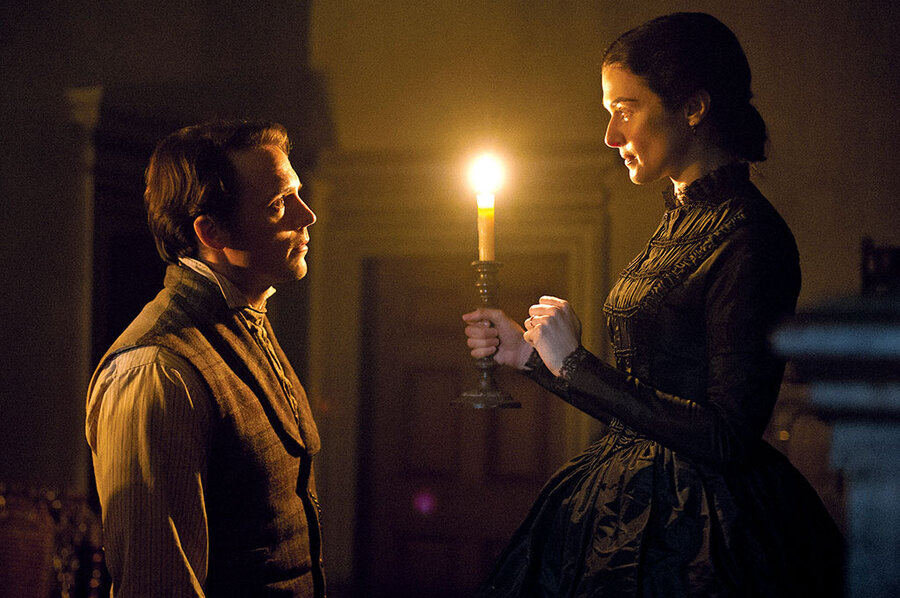'My Cousin Rachel' star Rachel Weisz freshens up the Gothic story
Loading...
“My Cousin Rachel” has all the accouterments of an old-fashioned Victorian thriller: fog-shrouded marshes, flickering candles, muttering servants, pearl necklaces, and a widow who may or may not be as poisonous as she appears. We are deep in Daphne du Maurier country, on a sprawling estate on the coast of Cornwall, England, but the real locus is purest old-school Hollywood.
Du Maurier, of course, was the author of “Rebecca,” which was made into a celebrated Alfred Hitchcock movie (his Hollywood debut). “My Cousin Rachel,” a subsequent bestseller, was filmed in 1952, starring Richard Burton and Olivia de Havilland. The new version stars Sam Claflin as the besotted Philip Ashley and Rachel Weisz as his cousin Rachel, the object of his besottedness. As was also true of the 1952 version, the film rises or falls on the casting of Rachel. With Weisz, it ascends to heights it might ordinarily never reach. She gives this 1830s-set Gothic warhorse a tingle of freshness.
The orphaned Philip was taken in as a child by his benevolent cousin Ambrose and brought up in luxury at the family estate, which he will eventually inherit. When Ambrose repairs to Florence for his health, he falls in love with Rachel and marries her, but then, in a series of letters to Philip, refers to her as “my torment” and implores his cousin to rescue him. By the time Philip arrives in Florence, Ambrose has died of a brain tumor and Rachel is nowhere to be found. In her place is an enigmatic Italian, Guido (Pierfrancesco Favino), who offers no guidance.
Believing his cousin was killed somehow by Rachel, Philip vows vengeance. But his intensity has a callow edge; when Rachel finally shows up at the estate, we know he’s a goner. Roger Michell, who wrote and directed, milks her debut for at least 20 minutes into the film, and when she is unveiled, it’s almost a horror film moment: the ghoul is unmasked. Except Rachel does not look horrific. Even in her severe dark gown, she seems more maidenly than monstrous.
The entire film hinges on the question, Is Rachel innocent or guilty? Philip quickly flip-flops, going so far as to draw up a will giving her control of the estate. (Ambrose never signed a will of his own, further complicating matters.) His lawyer (the marvelous Simon Russell Beale) and godfather (Iain Glen) all think the boy quite mad, or lovestruck (same thing), especially since it has come to their attention that Rachel has been overdrafting her vast gobs of cash and sending money abroad. She also has a suspicious habit of making home-brewed tea, which she lovingly doles out to Philip. In moments like these, the audience in the theater can be heard exuding a collective “Hmm.”
Michell doesn’t especially attempt to “modernize” the material, which is probably just as well. There is one startling scene in which Philip and Rachel traipse into the forest and end up in a rather ragged state of erotic entanglement, but for the most part, this movie could just as well have been made in 1952. Certainly film noir vamps and Gothic black widows were not strangers to the screen back then, and the attempt by some commentators to slap a neofeminist imprimatur on this film strikes me as being more wishful thinking than reality.
Still, Weisz is such a sharp and knowing actress that it’s impossible not to regard Rachel as an avatar of – something. She never overplays the is-she-or-isn’t-she stuff, which makes her character more deliciously ambiguous than if Weisz had spent all her time offering up strategically placed cold stares and curdled smiles. She accomplishes the near-impossible here: She humanizes a Gothic conceit and, in so doing, turns stage blood into real blood. Grade: B- (Rated PG-13 for some sexuality and brief strong language.)





